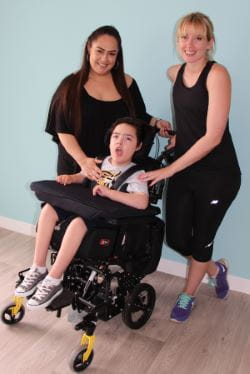Nothing near about drowning
This summer, we have unfortunately already seen many news stories about drowning events across Australia. Often, these stories feature news headlines like “Toddler fighting for life after near drowning”. While it’s important that drowning cases are covered in the media, the terminology used in media reports can be confusing or misleading.
It’s easy to assume that if someone is rescued from the water in time then they have only “nearly” drowned. Terms like near drowning, secondary drowning or delayed drowning are often used if someone has had difficulty breathing immediately after or at some subsequent point after being in water. However, none of these terms are recognised by drowning prevention organisations. If a person has experienced any kind of breathing impairment or complications as a result of being in the water, they have drowned.
According to the World Health Organisation, drowning is defined as the “the process of experiencing respiratory impairment from submersion/immersion in liquid.” A drowning incident can be further defined by its outcome and this will vary depending on how long someone is in the water, whether CPR is performed at the scene and how promptly medical attention is provided.
A drowning may result in:
- Death
- Survival with morbidity (injury) which can range from mild to severe
- Survival with no morbidity (no injury)
Royal Life Saving WA uses the terms fatal and non-fatal drowning to encompass this range of outcomes. The problem with using ‘near drowning’ is that it can minimise the very real consequences that people often experience as the result of their drowning and suggests that survivors of drowning experienced no ill-effects. Ideally, a non-fatal drowning will result in a full recovery, but some drowning survivors will experience long-term injuries to their brain or other organs due to oxygen deprivation.
 The burden of non-fatal drownings on the healthcare system and broader society is sizable. In 2018/19, WA recorded 29 fatal drownings, with a further 103 people admitted to hospital and 102 presenting to an emergency department as the result of a non-fatal drowning incident. Non-fatal drowning is most common among the 0-4 age group with children in this age group not only more likely to drown but also more likely to be rescued, as they are rarely swimming alone.
The burden of non-fatal drownings on the healthcare system and broader society is sizable. In 2018/19, WA recorded 29 fatal drownings, with a further 103 people admitted to hospital and 102 presenting to an emergency department as the result of a non-fatal drowning incident. Non-fatal drowning is most common among the 0-4 age group with children in this age group not only more likely to drown but also more likely to be rescued, as they are rarely swimming alone.
Keep Watch parent ambassador Simone Soto Flores shared her experiences after her son Ari suffered a devastating brain injury due to a non-fatal drowning. “All it took to change Ari’s life was a lack of oxygen to his brain as the result of his drowning. My hope as an ambassador for the Keep Watch program is to put a face to something that is often unspoken. Many of the stories we hear are either about fatal drowning deaths or children who have emerged unscathed from a drowning incident. The majority of people don’t know what happens when a child survives a drowning but is left with severe brain damage. Finding information or knowing what life will be like for children with a drowning-related brain injury is incredibly difficult.”
Using the correct terminology is important to ensure that the full scope and burden of drowning is understood in the community.
Learn how to respond if you're faced with a drowning emergency by taking part in a Royal Life Saving WA CPR course.

If you know someone who has been impacted by a non-fatal drowning they may be eligible to receive support through a Royal Life Saving WA Community Help Grant.
